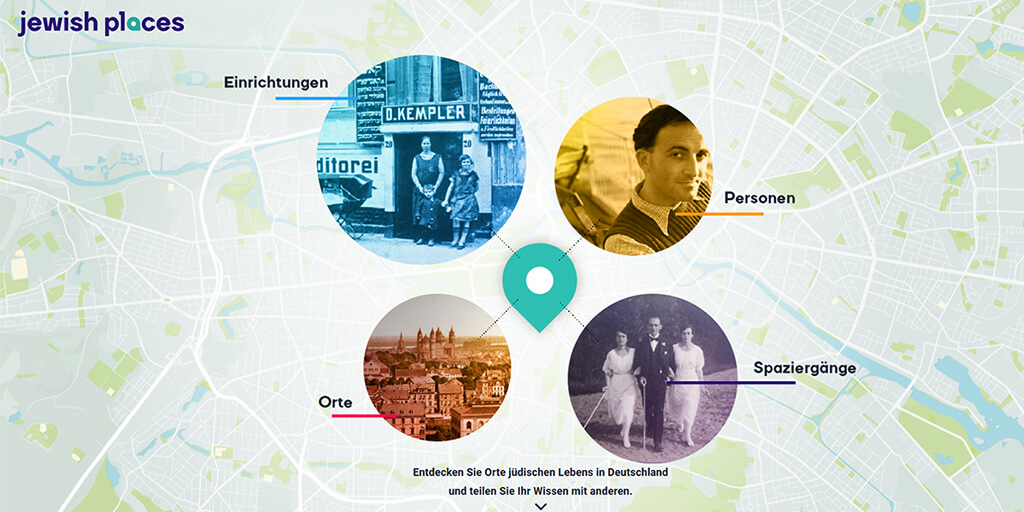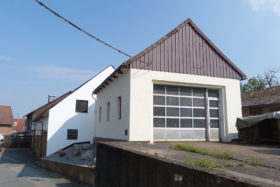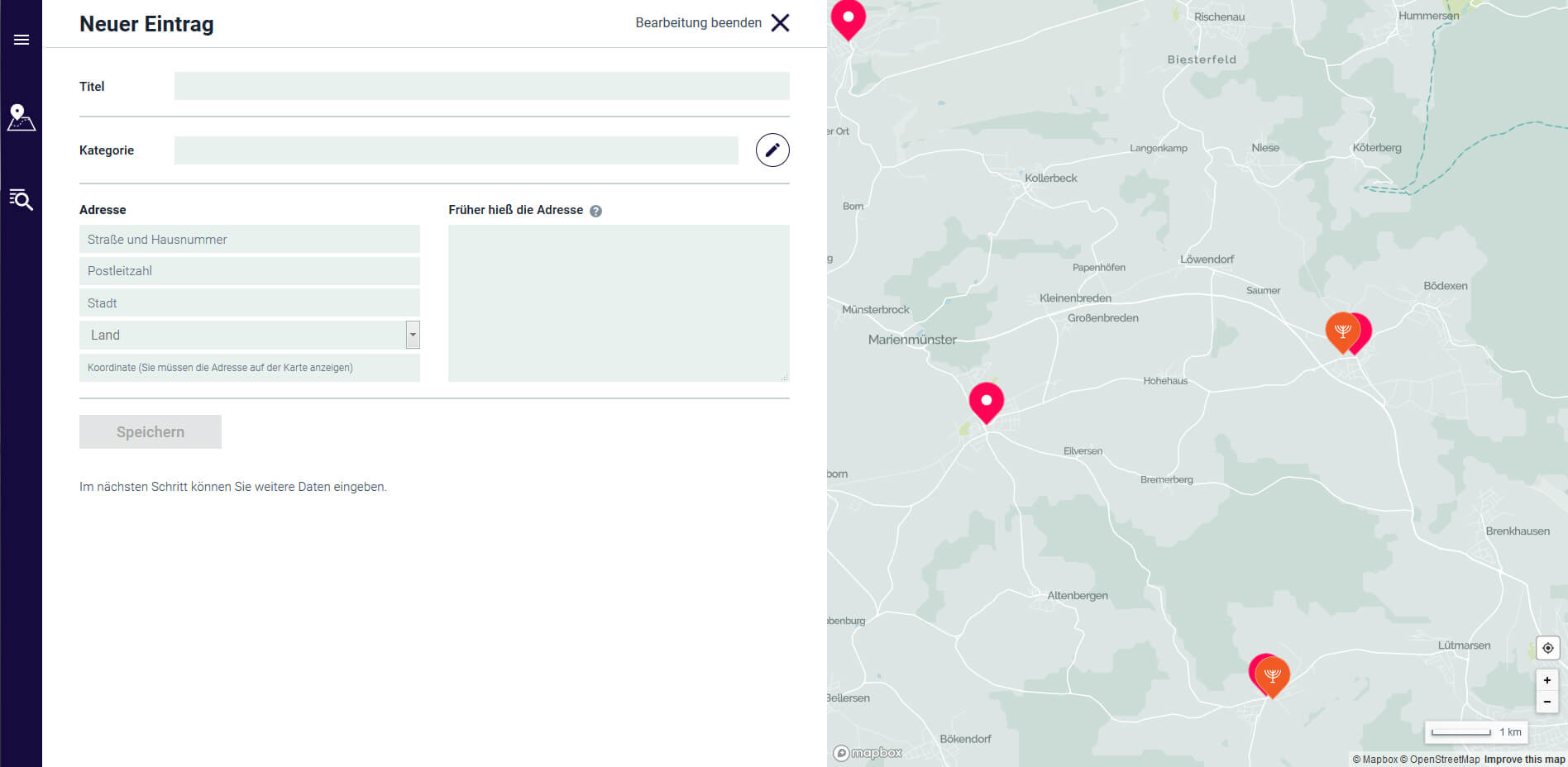Starting now, you can fill this new website with content and life
Jewish Places posts information about the local history of Jewish life in Germany on an interactive map, and invites users to contribute their own content. This sort of participation explores and permits a new kind of collecting, preserving, and sharing of knowledge about Jewish life.
From 1854 until the so called Kristallnacht (1938), the village of Fürstenau in North Rhine-Westphalia was home to the synagogue of the local Jewish community. But if you walk through the small town today, you wouldn’t know that the unremarkable building on Schwertstraße was once built and used as a house of worship. Like many synagogues in National Socialist Germany, after its desecration and devastation, it was sold and repurposed: in this case, as a garage. According to the stipulations for the buyer, it wasn’t supposed to be recognizable as a former synagogue.
Knowledge about this and other former sites of Jewish life can be found in books, or in this case also on the website of a local organization. But starting now, such history is also publicly available on the website www.jewish-places.de. Jewish Places is an interactive map based on open-source material from OpenStreetMap that was developed by several scholarly and cultural education institutions, including the Jewish Museum Berlin, as well as memorial organizations throughout Germany and Europe.
On the website, users can find information on Jewish places and history, but they can also contribute content themselves, including media such as photos and videos.
By clicking on a point on the map, information on the local history of Jewish life in Germany can be viewed and expanded interactively.
The interactive aspect is the innovative component of the project, and for institutions like the Jewish Museum Berlin, it is a progressive step that expands upon the previous possibilities for collecting, preserving, and sharing knowledge. Jewish Places connects historical and current Jewish life, and it expands the purview of the museum to the reality and processes of everyday life.
To begin with, information already available from various partner websites is available on the map, but our hope and aim for the future is that soon many new crowdsourced points will appear. For example, the initiators of Jewish Places are particularly interested in previously unknown and inconspicuous places, such as Fürstenau’s former synagogue. Ultimately, many buildings, streets, and areas are no longer recognizable as locations where Jewish life once took place, and knowledge of them is increasingly disappearing. The goal of Jewish Places is to compile this history, depict it visually, and make it publicly available. Even in the case of Fürstenau, there are still gaps to fill: for example, there is still no photo of the structure before its defacement in 1938.
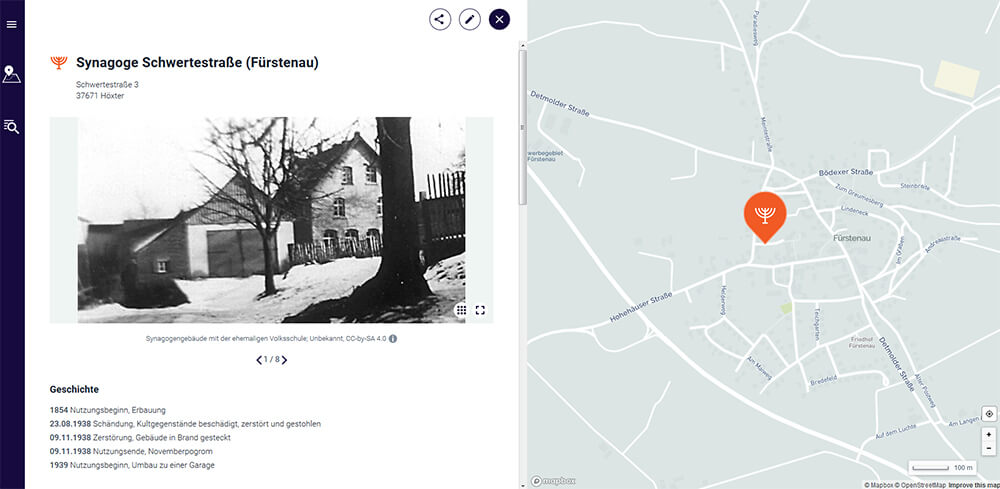
Screenshot from Jewish Places with the information available on the former synagogue in Fürstenau as of the project launch on 13 June 2018. Open a link to this page on Jewish Places
Most importantly, in order for Jewish Places to present the richest possible reflection of Jewish life, the site’s users are asked if they know of a Jewish place in their area; if so, they are able to mark it on the map and add text, photos or videos. Existing entries can be expanded and edited. This user-generated content gradually builds a visual registry of Jewish places that can be viewed anywhere.
Jewish Places marks the beginning of a digital revolution at the Jewish Museum Berlin. With new technology, we’re making new forms of participation possible: everyone can enter into discussion with other users; everyone can add their own knowledge and enter new information. In this way, the community creates a website depicting a wide array of Jewish sites in Germany.
Information collected in this way is available to everyone and can be used in many possible ways: users can go on walks that lead them to Jewish places in their area, student groups can trace local Jewish history and share their knowledge with others.
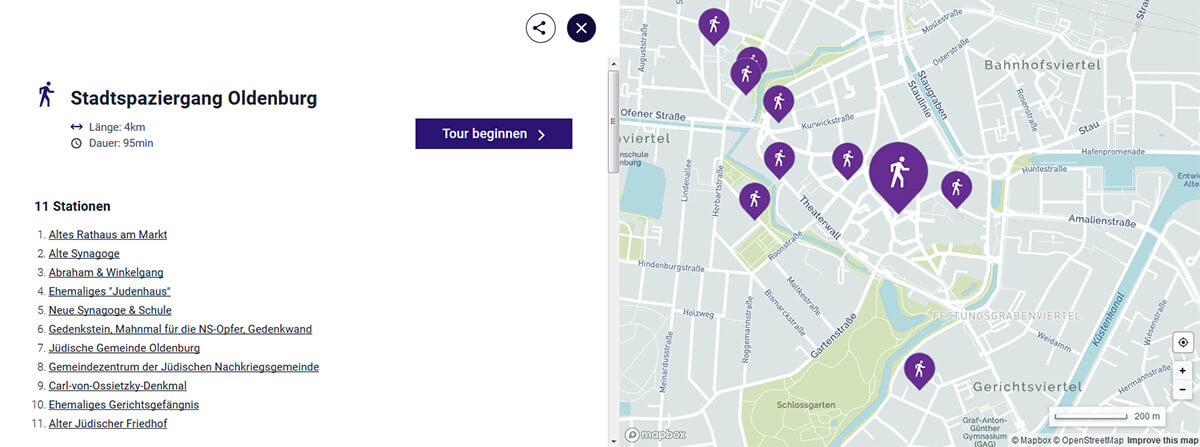
Screenshot from Jewish Places showing a city walk through Oldenburg. Open a link to this page on Jewish Places
The information on the platform can also contribute to scholarly engagement, and the team that developed Jewish Places is aware of the website’s power to connect. Project Manager Anika Nowak-Wetterau emphasizes possibility for museums and institutions dedicated to Jewish history to network and cooperate thanks to Jewish Places:
“Institutions in cities and states often have problems acquiring funding. Jewish Places can help put wind in the sails even of smaller institutions, making resources available to them,”
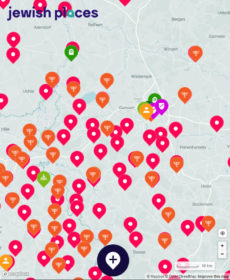 she says. David Studniberg, a member of the museum’s staff, adds:
she says. David Studniberg, a member of the museum’s staff, adds:
“We want to share knowledge, to spread it and to generate it collectively. That way, the great variety of Jewish life and Jewish history can be made visible.”
Jewish Places depends on the work and support of many engaged users. We warmly invite you to share your knowledge about historical and current Jewish Places with us!
Nina Breher is currently traveling; should she find traces of Jewish life while on her journey, of course she’ll immediately share them on Jewish Places …
Trailer for the launch of Jewish Places (in German)
Jewish Places thanks all its sponsors for their trust and generous commitment:
Friends of the Jewish Museum Berlin in the U.S.
Rothschild Foundation Hanadiv Europe
Federal Agency for Civic Education (bpb)
F. C. Flick Foundation against Xenophobia, Racism and Intolerance
Sam Gronner & Tamar Kallman (with focus on Ilmenau/Thuringia)
